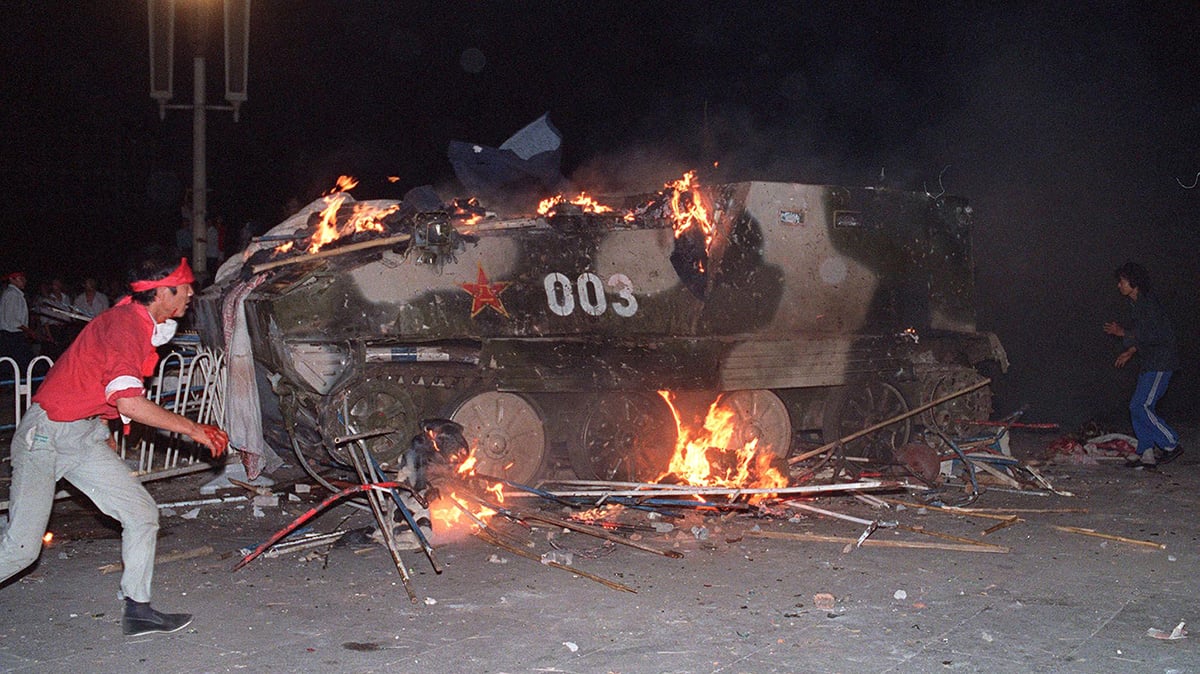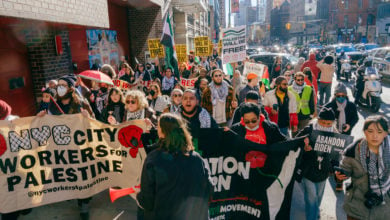On May 8, Pakistan’s government declared a “full-scale offensive” against Islamic fighters in the northwest of the country. Army spokesperson Maj. Gen. Athar Abbas said that 15,000 soldiers and other security forces were fighting an estimated 4,000 “anti-state elements.”
Pakistani troops are using military jets, attack helicopters, tanks and ground forces. The fresh troops sent to the region have orders to “eliminate extremists,” an order confirmed by President Asif Ali Zardari.
The military assault is mainly targeting the area called the Swat Valley, the neighboring districts of Buner and Dir, as well as South Waziristan. These areas are part of the Federally Administered Tribal Area that has long been a semi-autonomous region. The FATA covers a mountainous area in northwestern Pakistan, bordering Afghanistan.
The militants have fought back, delivering heavy blows to the military by ambushing military convoys, firing mortars, planting improvised explosive devices and waging street fights.
The intense fighting has caused a mass exodus of civilians from the area under attack. With no civilian vehicles running on the roads, most of the refugees are traveling on foot, seeking shelter in make-shift refugee camps. The number of refugees runs into the hundreds of thousands. The U.N. High Commissioner for Refugees has registered some 150,000 people fleeing the region. U.N. officials estimate that the total number displaced may reach half a million. Other estimates put the number of people fleeing the region, including those staying with their extended families in other areas, at already over a half a million. On May 8, U.N. officials in Geneva expressed deep concerns about the welfare of up to a million people displaced by the fighting.
The official explanation as to why Pakistan’s government decided to launch a full-scale offensive is that “Taliban” forces broke the agreements and tried to expand the territory under their control. These Islamist forces—that include the tribal leadership of the area—do not identify themselves as the Taliban. They are based in the relatively sparsely populated northwest of Pakistan, and have no popular base in other parts of Pakistan, a country of 160 million people.
Offensive indicates expansion of imperialist aggression
Contrary to the sensationalized stories in the U.S. business media, any breach of agreements was not an indication of their designs to take over all of Pakistan. The notion that the tribal leaders of Swat and South Waziristan, with no conventional military and only light weapons, were intent on occupying all of Pakistan and take over its nuclear arsenal is a fabrication. This fabrication serves the purpose whipping up a frenzy to convince U.S. public opinion of the need to expand its war in the region.
The U.S. government, under Bush and Obama, had relentlessly pushed Pakistan—a U.S. client state—to end negotiations with the tribal forces and attack them. Pakistanis in the tribal area bordering Afghanistan have shown sympathy and support for their Afghan neighbors under occupation.
In the eighth year of a war it is not winning, Washington is hoping to cut off any aid given to the Afghan resistance forces coming from neighboring Pakistan. The term “Af-Pak” war, recently in vogue in the Pentagon’s terminology, is reflective of Washington’s plan to freely expand their “war on terror” to the Pakistani side of the border.
Prior to the recent assault, Pakistan’s government had shown no inclination to take on the Islamic militants in any kind of sustained fighting. While there had been occasional clashes, the government had engaged in negotiations with the same forces it today calls “miscreants.” Agreements were reached both under the current civilian government of Zardari and the previous military government of Musharraf.
The reason Pakistan’s government had opted for negotiations, and not open confrontation was the difficulty of winning a sustained battle in the tribal area. The rugged terrain in the mountainous area with few roads makes the conditions unfavorable for Pakistan’s military. Additionally, while the fighters in the tribal region are highly motivated, the motivation of Pakistan’s military forces is suspect.
There are also elements in Pakistan’s military and intelligence that have various levels of sympathy to the Taliban-aligned forces. After all, it was Pakistan’s intelligence service, the ISI, that formed the Taliban and catapulted them to power. At the time, Washington also supported the Taliban. The United States had fully funded and supported the Taliban’s predeccesors, the Mujahadeen.
President Zardari’s political instability, with his total lack of popular support, may have played a key role in his decision to attack. It was only two months ago that Pakistani masses staged large and coordinated protests across the country. After several failed attempts to crush the protests, Zardari was forced to concede to the key demand of the protesters, the reinstatement of Chief Justice Iftikhar Chaudhry. Chaudhry was the independent judge twice removed by U.S.-supported military dictator Gen. Pervez Musharraf.
Pakistani government capitulates to U.S. demands
Forced to fight for his regime’s survival, and knowing that he could not rely on popular support, Zardari decided to capitulate to U.S. demands of opening up a front against the Islamic forces in the tribal area. Washington had made it clear to Zardari that without taking this step it would not support him. The overtures made by U.S.
special envoy Richard Holbrooke towards Zardari’s chief political rival, former Prime Minister Nawaz Sharif, underlined this point.On May 6, Zardari met with President Barack Obama on a U.S. visit. Obama talked about the need to provide extensive aid to Pakistan. The U.S. Senate will soon discuss a bill, sponsored by Senators Lugar and Kerry, to give $1.5 billion worth of aid annually to Pakistan. Of course Zardari can only earn this aid by proving to be a good ally in the “war on terror.”
Since the collapse of the Soviet Union and the shift to the right in Indian politics, U.S. imperialism has considered India an important ally, a country it is hoping to use to pressure China, India’s neighbor. Washington had long urged Pakistan to turn its attention from long-standing animosity with India towards the “war on terror” in Pakistan’s tribal region. Toeing this line, during his U.S. visit Zardari declared that he had “never considered India a threat.” Responding to an interviewer’s question about moving troops from the Indian border to the tribal areas of Pakistan, Zardari said: “Pakistan has already done so.”
At the same time that Pakistan’s military is attacking the tribal region, the United States is continuing its aerial bombings of the same people using drones, pilot-less aerial vehicles. On May 8, a drone fired missiles at a compound in South Waziristan, killing six and injuring 10 others.
Since August 2008, CIA-operated U.S. drones have carried out 39 bombings, killing at least 370 people. This open and ongoing violation of the territorial integrity of a sovereign nation has increasingly angered the people of Pakistan.
Most major Pakistani political parties, notoriously corrupt and largely subservient to U.S. interests, have been supportive of the government’s assault on the tribal region. But a large religious party, Jamaat-e-Islami, has protested the attack and called it Pakistan’s submission to an American war.
Reporting on the view of Pakistanis, the May 9 Washington Post stated: “The militant problem is viewed by many here as having been created by the United States in order to fight the Soviets in Afghanistan, and the army’s new offensive is also widely viewed as a show to please the United States and gain more military aid and training.”
Pakistan’s military will likely take the tribal regions in its military offensive. But it is unlikely to gain real control and defeat the Islamic fighters there, who will engage in partisan warfare and deliver heavy blows to a military unmotivated to fight and unequipped to wage battle in the mountainous terrain.
What is even less likely to happen is for Pakistan’s government to regain stability and popular support as a result of its military adventure. The United States is forced to take greater risks in its desperation to find a way to defeat resistance to its occupation of Afghanistan. Its great risk is losing control of Pakistan to the resistance of the people.





